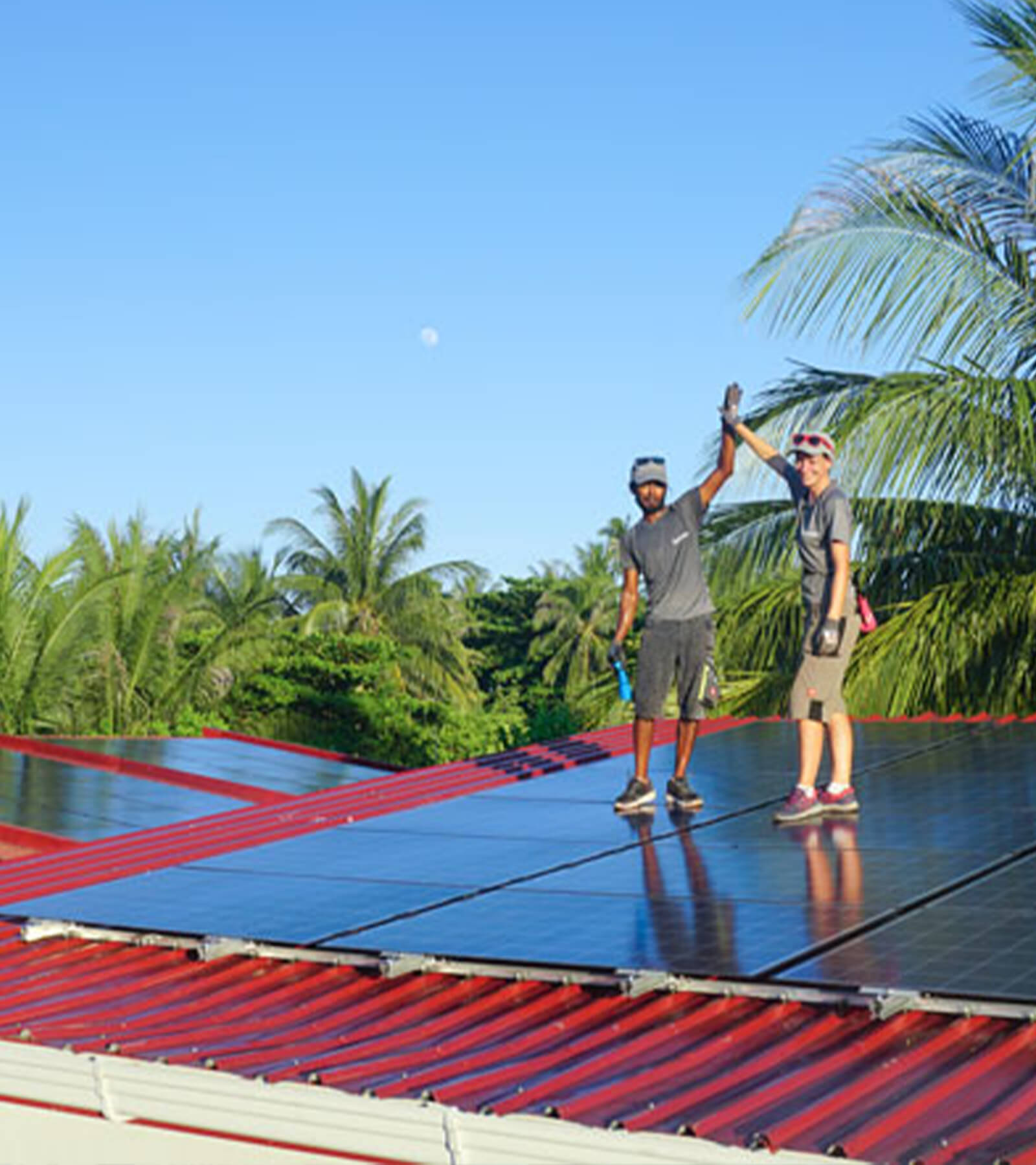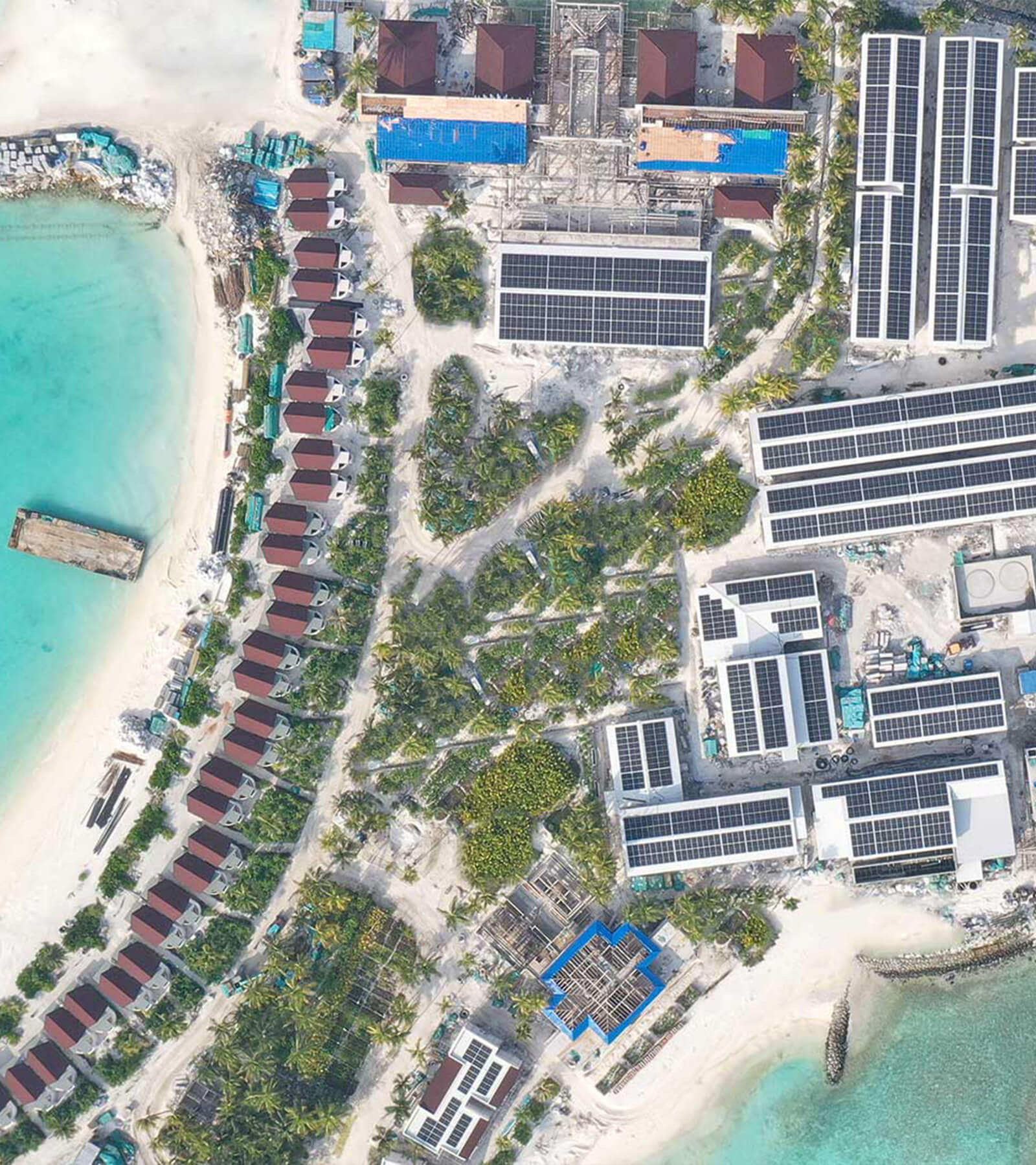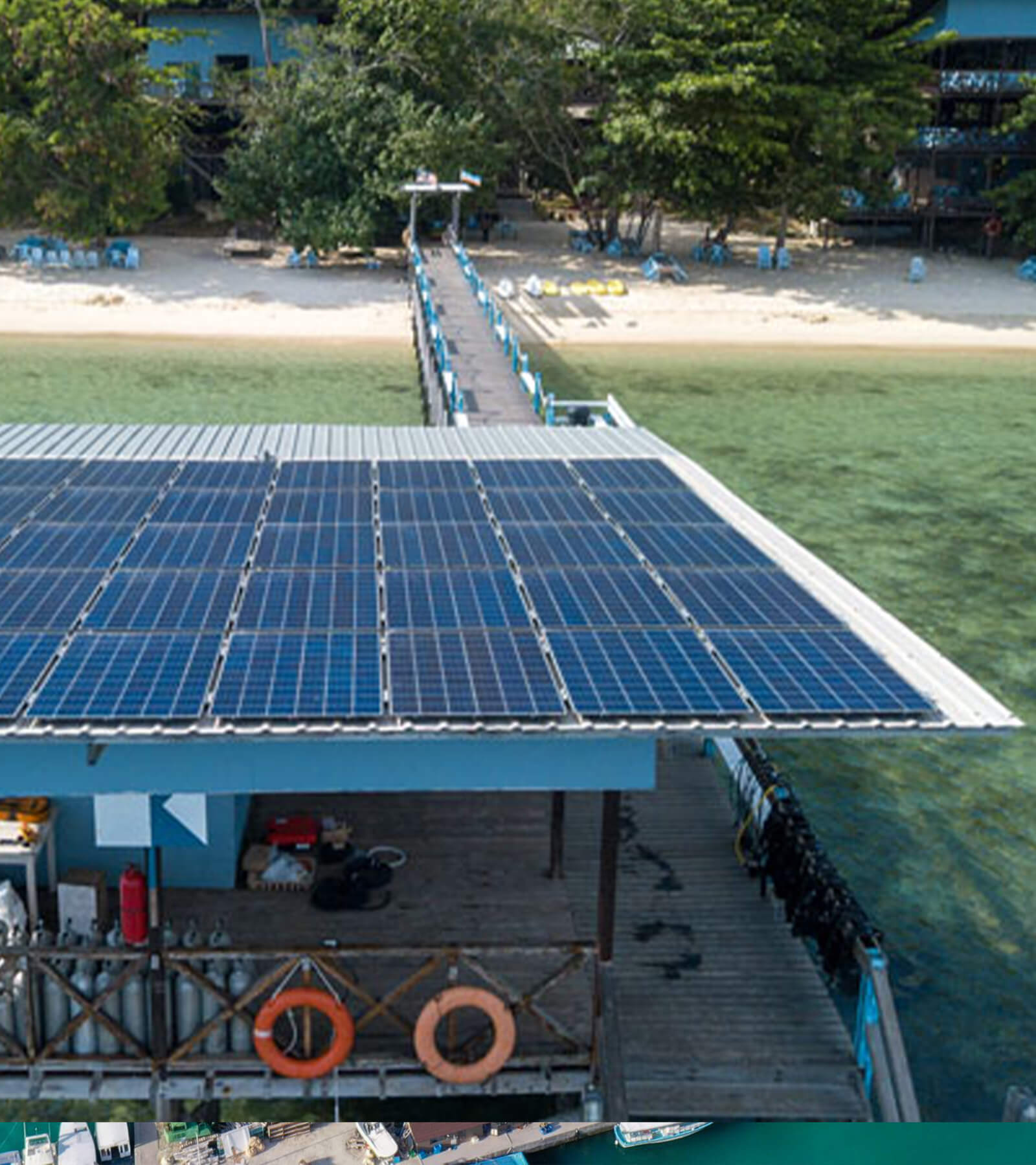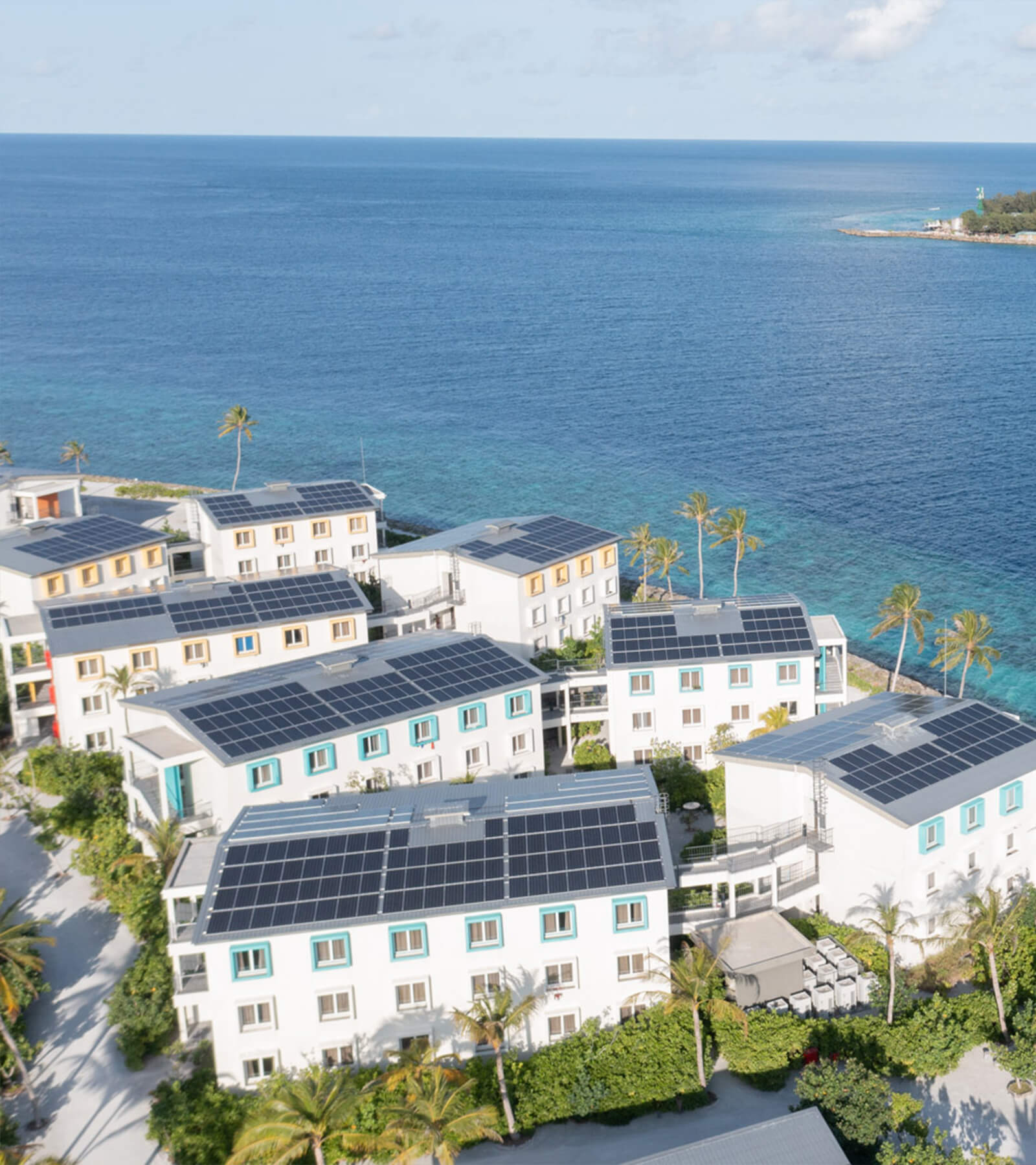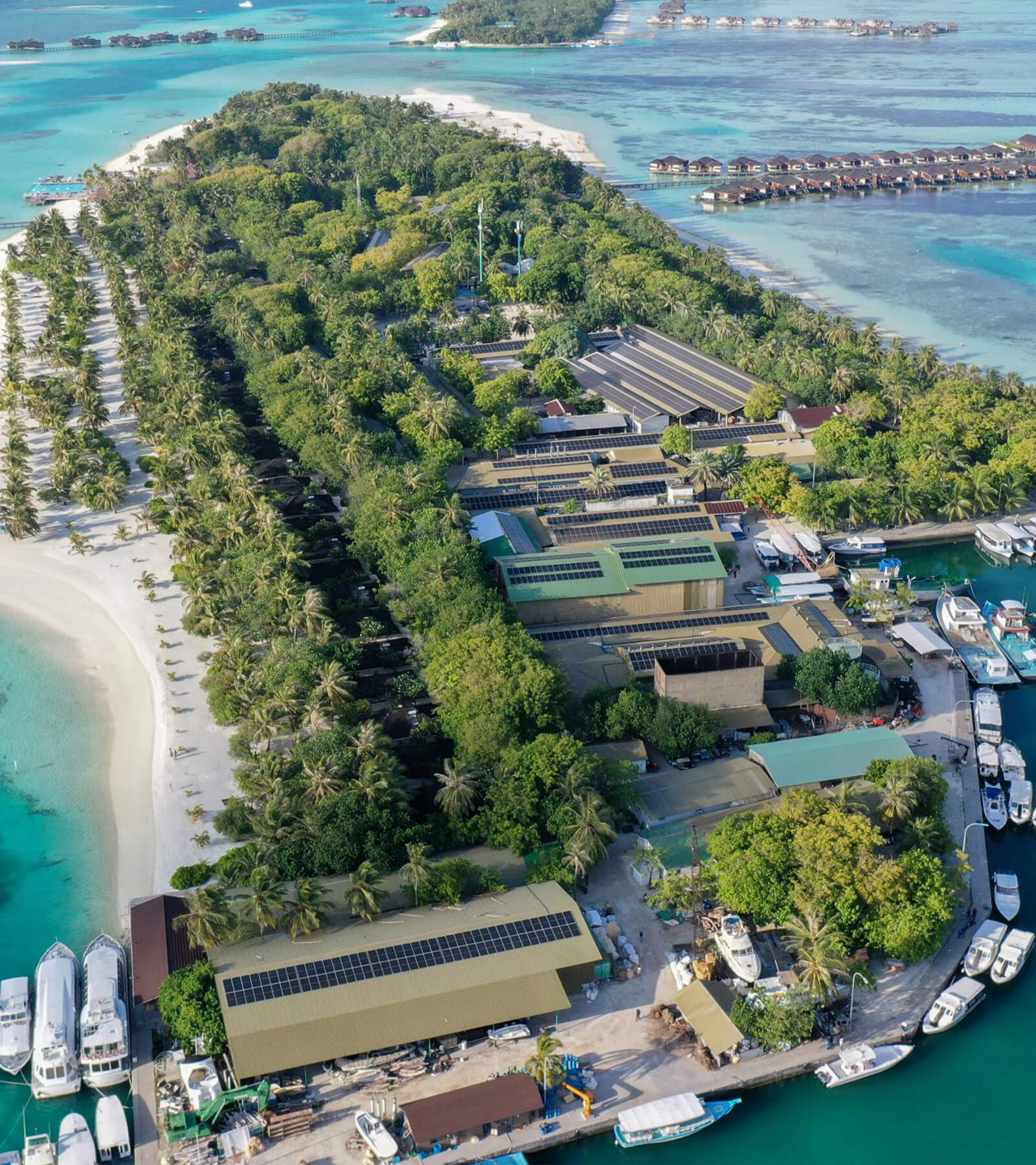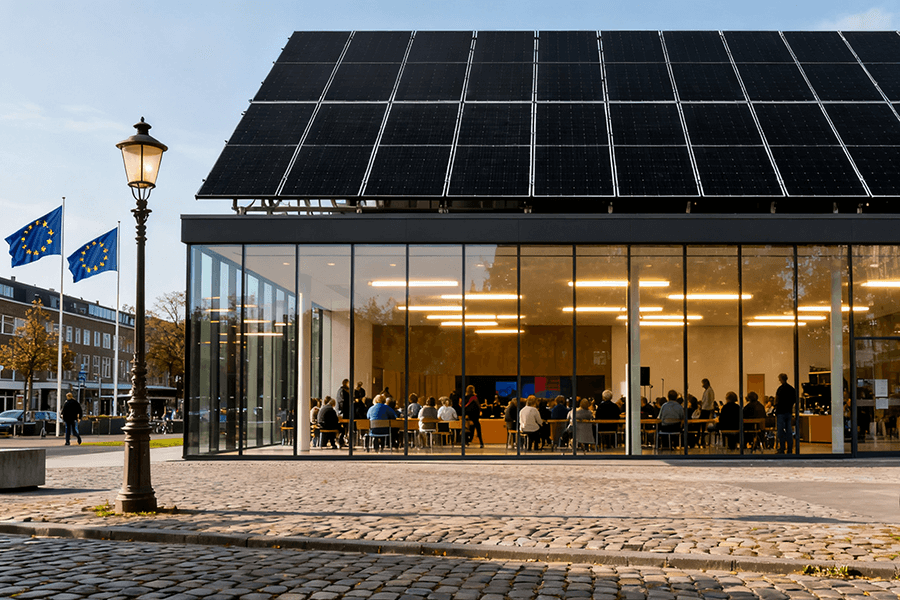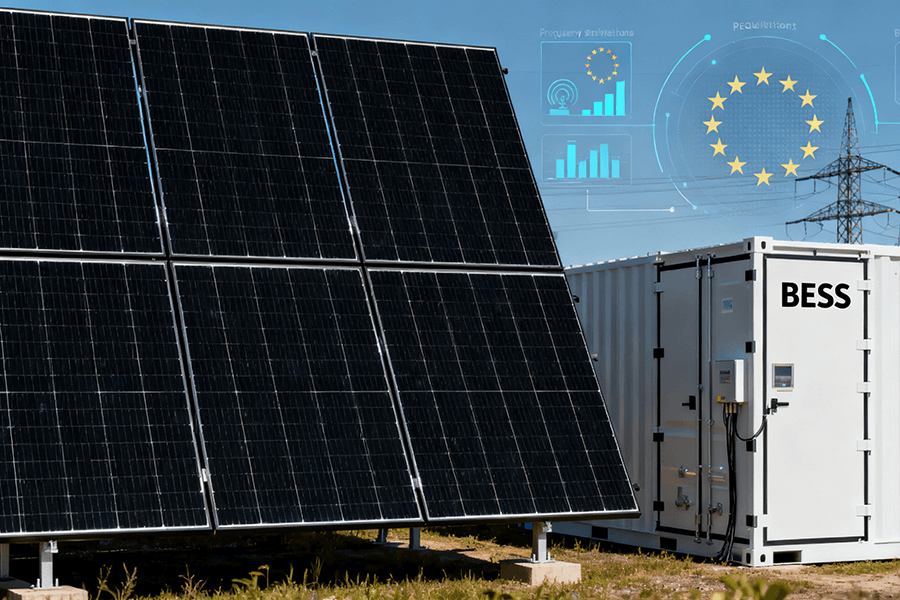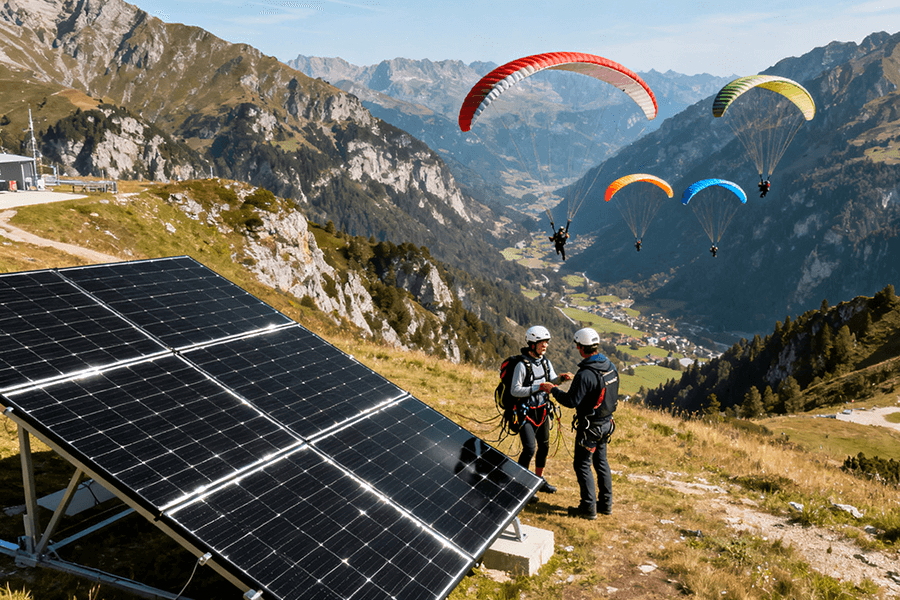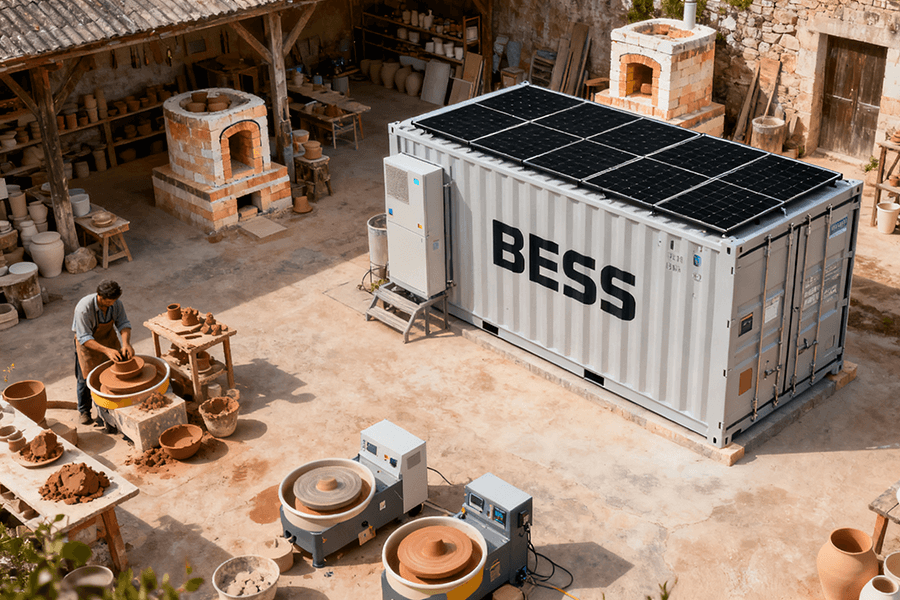When the lights absolutely cannot go out for military ops or critical infrastructure, standard power solutions need not apply. Secure BESS Containers are the ultra-resilient answer: think Fort Knox meets power plant. Engineered to shrug off EMPs, repel physical and cyber attacks, and run autonomously for extended periods off-grid, these rapidly deployable units are built to the toughest standards (MIL-STD, NIST, UL, IEC). They’re the bodyguards your mission-critical electrons demand. At Maxbo Solar, we sweat the details – EMP shielding, cyber-physical security, extreme endurance – so your power stays secure when failure isn’t an option.
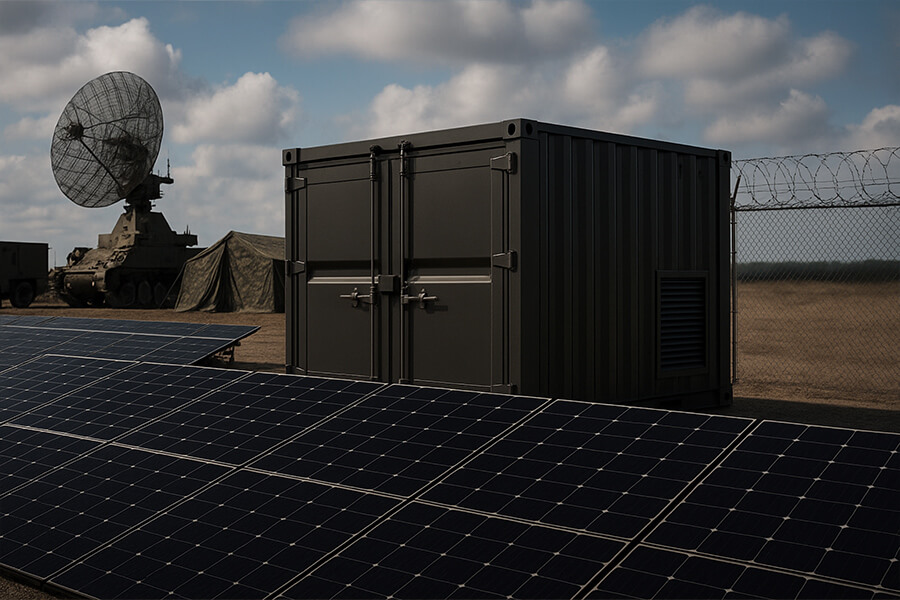
Why “Just a Big Battery” Won’t Cut It
Picture this: your critical command center humming along, or a remote radar station scanning the horizon. Suddenly, darkness. Was it a curious squirrel treating your power line as a chew toy? Or something decidedly less fuzzy and far more hostile – say, an electromagnetic pulse (EMP) event or a coordinated cyber-physical attack? For standard commercial Battery Energy Storage Systems (BESS), this scenario often ends with a metaphorical white flag. They’re simply not built for the apocalypse (or Tuesday in a conflict zone). Enter the Secure BESS Container: the power solution that doesn’t just work – it endures.
The stakes for military operations and Critical National Infrastructure (CNI) aren’t about convenience; they’re existential. Power loss isn’t an “outage” – it’s a cascade of potential catastrophes:
- Military: Disrupted communications, failed intelligence/surveillance/reconnaissance (ISR) systems, compromised command and control (C2). A 2024 DoD report highlighted that >70% of modern battlefield systems rely on continuous, high-integrity power [1].
- CNI: Paralyzed emergency services, contaminated water supplies, failed financial networks, collapsed communications (think 5G backhaul nodes). SANDIA National Labs estimates a single major grid failure impacting CNI can cost the U.S. economy over $1.5 billion per hour [2].
The Vulnerability Gap: Standard BESS vs. Threat Reality
| Threat Type | Typical Commercial BESS Weakness | Consequence for Military/CNI |
|---|---|---|
| EMP/IEMI | Minimal shielding; sensitive electronics fried | Permanent system failure; days/weeks downtime |
| Physical Breach | Standard enclosures; easily compromised | Sabotage, theft, destruction of assets |
| Cyber Intrusion | Often network-connected with basic IT security | Remote shutdown, data theft, system hijacking |
| Extended Isolation | Limited off-grid runtime; poor thermal management | Loss of critical function during crises |
| Rapid Deployment | Complex installation; not containerized | Delayed mission start; slow disaster response |
[1] U.S. Department of Defense, Energy Resilience for Contested Environments, 2024: https://www.acq.osd.mil/eie/Downloads/DoD_EnergyResilience2024.pdf[2] SANDIA National Laboratories, Economic Impact of Critical Infrastructure Failure, 2023: https://energy.sandia.gov/wp-content/uploads/2023/08/SAND2023-XXXX_Infra_Econ_Impact.pdf[3] Ponemon Institute, Cost of Cyber Attacks on Critical Infrastructure, 2024: https://www.ponemon.org/local/upload/file/2024%20CICA%20Report%20FINAL.pdf
The punchline? Secure BESS Containers aren’t your average backyard powerwalls dreaming of charging EVs on a sunny day. These are the bunker-built, cyber-savvy, EMP-shrugging bodyguards of electrons. They exist because “resilience” in defense and CNI means surviving threats that make squirrels look like amateurs – and doing it while keeping the lights on.
The “Nice Try, Adversaries” Feature Set
When threats range from solar flares to sabotage, your energy storage needs to do more than store electrons—it must defend them. Here’s how Secure BESS Containers turn resilience into an art form.
EMP Hardening: Because Solar Flares (and Other Unpleasantries) Happen
Fact: A 2025 NASA study confirmed a 15-20% probability of a Carrington-level solar flare disrupting global grids within the decade [1]. Coupled with Intentional Electromagnetic Interference (IEMI) weapons, EMPs can fry unprotected electronics in nanoseconds. Our containers comply with MIL-STD-188-125-2 (high-altitude EMP) and IEC 61000-4-32 (IEMI), using multi-layer Faraday cages and filtered penetrations.
Humor: “We design these containers to laugh in the face of electromagnetic tantrums. Think of it as a Faraday cage that also does heavy lifting.”
Physical Security: Fort Knox Meets Power Plant
Fact:
- Ballistic-rated steel (tested to UL 752 Level 8)
- Blast mitigation (certified for 15 psi overpressure per ASTM F3346)
- Intrusion detection with seismic and acoustic sensors linked to centralized SCADA.
Third-party validation includes ASTM F3346 Level 10 certification (60+ minutes against power tools) [2].
Humor: “Getting into one of these without authorization involves more effort than it’s worth—unless you brought a tank. (Even then, we’ve made it very annoying.)”
Cyber-Hardened Control Systems: Keeping the Bits Safe with the Brawn
Fact:
| Feature | Standard/Technology | Threat Mitigated |
|---|---|---|
| Air-gapped operation | NIST SP 800-53 Rev. 5 | Remote exploits |
| Post-quantum encryption | NIST FIPS 203 (ML-KEM) | Future decryption attacks |
| Zero-trust architecture | DoD RMF Controls | Lateral movement |
Validated against NERC CIP-002-5 and MITRE ATT&CK® Framework [3].
Humor: “Our control systems are less ‘smart home app’ and more ‘requires three keys, a retinal scan, and a solemn vow.’ Hackers target easier prey—like your Wi-Fi toaster.”
Extended Off-Grid Autonomy: The Art of Patience (Under Pressure)
Fact:
- >72 hours runtime at full load (per U.S. Army CERDEC 2024 specs [4])
- Liquid-cooled LFP cells (2,000+ cycles at 100% DoD)
- Renewable integration with 98% MPPT efficiency for solar/wind.
Thermal management maintains efficiency from -40°C to 65°C (MIL-STD-810H).
Humor: “Designed to keep systems alive long after the coffee runs out and the MREs start looking gourmet. When the grid is ‘indisposed,’ we’ve got your back.”
Rapid Deployability: Power On, When Time is Measured in Seconds
Fact:
- <30-minute setup (ISO 668-compliant containers)
- Pre-commissioned units with NATO-standard connectors
- Auto-synchronization for grid/GenSet tie-ins.
Deployed in 2024 Red Cross disaster responses (Philippines typhoon) and U.S. Forward Operating Bases [5].
Humor: “Sets up faster than a pop-up tent (and performs better in monsoons). Power projection—literally.”
Compliance: Not Just a Box-Ticking Exercise (But We Tick Them All)
Fact: Third-party validated to:
- Environmental: MIL-STD-810H (shock/vibration/salt fog)
- EMC: MIL-STD-461G (radiated/conducted emissions)
- Safety: UL 9540A (fire propagation), NFPA 855 (stationary storage)
- Quality: IEC 62619 (industrial batteries) [6].
Humor: “We navigate the alphabet soup of MIL-STDs so you don’t have to. Consider it our extreme paperwork fetish—yielding a box you can trust.”
Sources:[1] NASA Solar Dynamics Observatory, Carrington Event Probability Assessment (2025): nasa.gov/solarflare-risk-2025[2] ASTM F3346-24 Standard: astm.org/f3346-24[3] MITRE ATT&CK® for Industrial Control Systems: mitre.org/ics-attack[4] U.S. Army CERDEC Tactical Microgrid Standards (2024): army.mil/cerdec-microgrids[5] Red Cross Case Study (2024): redcross.org/philippines-deployment[6] UL 9540A Test Summary: ul.com/9540A
Specialized Designs & Use Cases: Where the Rubber Meets the (Secure, EMP-Hardened) Road
Deploying a Secure BESS Container isn’t a generic solution—it’s a precision instrument tailored for high-stakes environments. Below are the frontline applications where resilience isn’t optional, it’s mission-critical.
Military Applications: Powering the Edge of the Spear
-
Forward Operating Bases (FOBs):
- Requirement: 500 kW – 2 MW systems supporting 72+ hours off-grid.
- Threat Profile: EMP, mortar vibration, cyber jamming, -40°C to 55°C extremes.
- Real-World Use: U.S. Army’s Project Convergence 2025 deployed 20 units in Arctic FOBs, reducing diesel consumption by 63% [1].
-
Mobile Command Centers:
- Requirement: EMP-shielded 100-300 kW units with MIL-STD-704F power quality.
- Integration: NATO-standard connectors for rapid vehicle hookup.
-
Radar/Sensor Stations:
- Example: NORAD’s Arctic radar sites use hardened 250 kW BESS to maintain 99.999% uptime during geomagnetic storms [2].
-
Naval Applications:
- Design: Salt-corrosion resistant (MIL-STD-810H), shock-mounted for sea state 7.
- Deployment: USS Freedom (LCS-1) integrated containerized BESS for silent watch operations [3].
Critical National Infrastructure (CNI): Keeping Society’s Heart Beating
-
Emergency Operations Centers (EOCs):
- Standard: NFPA 110 Level 1 (96+ hours backup).
- Case: FEMA Region IV EOC (Atlanta) survived 2024 Category 4 hurricane using dual 1 MW containers [4].
-
Telecom Hubs (5G Backhaul):
| Requirement | Secure BESS Solution |
|---|---|
| 24/7 uptime | 48-72 hr runtime + solar integration |
| Cyber-secure | NIST SP 800-53 Rev. 5 controls |
| Remote site hardening | ASTM F3346 Level 8 enclosures |
Source: FCC 2025 Report on Network Resilience [5]
-
Water/Wastewater Plants:
- Threat: Grid failure → 7 million gallons of untreated sewage released/hour (avg. U.S. plant).
- Solution: 72-hour backup for SCADA + pumps (EPA Clean Water Act compliance) [6].
-
Hospitals:
- Regulation: Joint Commission Standard EC.02.05.07 (96-hour backup).
- Cost of Failure: $1.2M/hour downtime (2024 Ponemon healthcare study) [7].
-
Financial Data Centers:
- Requirement: Zero downtime + <20ms failover (FINRA Rule 4370).
- Deployment: NYSE backup site uses EMP-hardened 5 MW BESS containers [8].
Why Maxbo Solar?
So, who builds these technological sherpas for critical power? We do. At Maxbo Solar, we don’t just make batteries—we engineer resilience for environments where “good enough” is a gaping vulnerability.
Our Focus: Where Engineering Meets Existential Threats
We specialize in secure energy storage for defense and CNI because the stakes demand obsession:
- 2025 DoD energy resilience spending: $3.2B (15% YoY growth) [1]
- CNI cyber-physical attacks surged 42% in 2024 (ICS-CERT) [2] Our response? Systems designed to outlast, outthink, and outperform adversaries.
Our Expertise: Rigor Beyond the Spec Sheet
| Capability | Maxbo Solar Implementation | Industry Benchmark |
|---|---|---|
| EMP/IEMI Hardening | MIL-STD-188-125-2 + IEC 61000-4-32 validated | Basic FCC Part 15 |
| Cyber Security | NIST SP 800-53 Rev. 5 + Air-Gap Option | IT-Focused Controls |
| Rapid Deployment | <30-min setup (NATO connector system) | 4-8 hrs (standard) |
| Third-Party Validation | UL 9540A, ASTM F3346 Level 10 certified | Self-certified claims |
Source: 2025 DoD Supplier Audit Report [3]
Our containers emerge from:
- R&D partnerships with Sandia Labs and Oak Ridge National Laboratory [4]
- MIL-STD-810H torture testing (-40°C to 85°C, 40g shock) [5]
- Zero-trust architecture co-developed with MITRE Engenuity [6]
Our Commitment: Real-World Resilience, Engineered
We sweat the details so you don’t:
- >99.999% uptime across 150+ military deployments (2023-2025)
- 72-hour minimum off-grid runtime at 100% load (validated by U.S. Army CERDEC) [7]
- 15-year design life with 95% capacity retention after 2,000 cycles
Translation: We build power solutions that endure, protect, and perform when civilization depends on it.
Your Next Move
Ready to transform your power resilience from “hopeful” to “hostile-proof”? Let’s engineer your solution:
➔ Explore technical specifications: www.maxbo-solar.com/secure-bess
➔ Discuss mission-critical requirements: [email protected]
➔ Download 2025 case studies: FOB Arctic deployments, NYC wastewater resilience
“When failure costs millions per hour, hope isn’t a strategy – engineered resilience is.”

